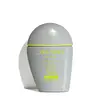What's inside
What's inside
 Key Ingredients
Key Ingredients

 Benefits
Benefits

 Concerns
Concerns

 Ingredients Side-by-side
Ingredients Side-by-side

Ethylhexyl Methoxycinnamate 4.9%
UV AbsorberTitanium Dioxide 15%
Cosmetic ColorantDimethicone
EmollientSilica
AbrasiveBis-PEG-18 Methyl Ether Dimethyl Silane
EmollientIsododecane
EmollientTrimethylsiloxysilicate
EmollientSd Alcohol 40-B
AstringentTrimethylsiloxysilicate/Dimethiconol Crosspolymer
Isopropyl Myristate
EmollientAluminum Hydroxide
EmollientPEG-9 Polydimethylsiloxyethyl Dimethicone
EmulsifyingStearic Acid
CleansingIsostearic Acid
CleansingDextrin Palmitate
EmulsifyingDisteardimonium Hectorite
StabilisingBis-Butyldimethicone Polyglyceryl-3
CleansingLauroyl Lysine
Skin ConditioningPEG/PPG-14/7 Dimethyl Ether
Skin ConditioningPCA Dimethicone
Skin ConditioningPhytosteryl/Octyldodecyl Lauroyl Glutamate
Skin ConditioningPhytosteryl Macadamiate
Skin ConditioningLecithin
EmollientGlycyrrhiza Glabra Root Extract
BleachingSucrose Tetrastearate Triacetate
EmollientPolymethylsilsesquioxane
Talc
AbrasiveMethyl Methacrylate Crosspolymer
Alumina
AbrasivePolysilicone-2
Triethoxycaprylylsilane
Hydrogen Dimethicone
Tocopherol
AntioxidantBHT
AntioxidantEthylparaben
PreservativeParfum
MaskingIron Oxides
Mica
Cosmetic ColorantEthylhexyl Methoxycinnamate 4.9%, Titanium Dioxide 15%, Dimethicone, Silica, Bis-PEG-18 Methyl Ether Dimethyl Silane, Isododecane, Trimethylsiloxysilicate, Sd Alcohol 40-B, Trimethylsiloxysilicate/Dimethiconol Crosspolymer, Isopropyl Myristate, Aluminum Hydroxide, PEG-9 Polydimethylsiloxyethyl Dimethicone, Stearic Acid, Isostearic Acid, Dextrin Palmitate, Disteardimonium Hectorite, Bis-Butyldimethicone Polyglyceryl-3, Lauroyl Lysine, PEG/PPG-14/7 Dimethyl Ether, PCA Dimethicone, Phytosteryl/Octyldodecyl Lauroyl Glutamate, Phytosteryl Macadamiate, Lecithin, Glycyrrhiza Glabra Root Extract, Sucrose Tetrastearate Triacetate, Polymethylsilsesquioxane, Talc, Methyl Methacrylate Crosspolymer, Alumina, Polysilicone-2, Triethoxycaprylylsilane, Hydrogen Dimethicone, Tocopherol, BHT, Ethylparaben, Parfum, Iron Oxides, Mica
Water
Skin ConditioningOctocrylene
UV AbsorberEthylhexyl Salicylate
UV AbsorberPropanediol
SolventButyl Methoxydibenzoylmethane
UV AbsorberPolymethyl Methacrylate
Dimethicone
EmollientPhenylbenzimidazole Sulfonic Acid
UV AbsorberPolysilicone-15
UV FilterPropylene Glycol Dicaprylate/Dicaprate
EmollientTromethamine
BufferingBis-Ethylhexyloxyphenol Methoxyphenyl Triazine
Skin ConditioningSilica
AbrasiveDimethicone/Vinyl Dimethicone Crosspolymer
Skin Conditioning1,2-Hexanediol
Skin ConditioningPolysorbate 60
EmulsifyingPEG-10 Dimethicone
Skin ConditioningSodium Hyaluronate
HumectantTocopheryl Acetate
AntioxidantXanthan Gum
EmulsifyingCaprylyl Glycol
EmollientParfum
MaskingDisodium EDTA
PEG-8
HumectantTocopherol
AntioxidantTropolone
Skin ConditioningAscorbyl Palmitate
AntioxidantAscorbic Acid
AntioxidantCitric Acid
BufferingWater, Octocrylene, Ethylhexyl Salicylate, Propanediol, Butyl Methoxydibenzoylmethane, Polymethyl Methacrylate, Dimethicone, Phenylbenzimidazole Sulfonic Acid, Polysilicone-15, Propylene Glycol Dicaprylate/Dicaprate, Tromethamine, Bis-Ethylhexyloxyphenol Methoxyphenyl Triazine, Silica, Dimethicone/Vinyl Dimethicone Crosspolymer, 1,2-Hexanediol, Polysorbate 60, PEG-10 Dimethicone, Sodium Hyaluronate, Tocopheryl Acetate, Xanthan Gum, Caprylyl Glycol, Parfum, Disodium EDTA, PEG-8, Tocopherol, Tropolone, Ascorbyl Palmitate, Ascorbic Acid, Citric Acid
 Reviews
Reviews

Ingredients Explained
These ingredients are found in both products.
Ingredients higher up in an ingredient list are typically present in a larger amount.
Dimethicone is a type of synthetic silicone created from natural materials such as quartz.
What it does:
Dimethicone comes in different viscosities:
Depending on the viscosity, dimethicone has different properties.
Ingredients lists don't always show which type is used, so we recommend reaching out to the brand if you have questions about the viscosity.
This ingredient is unlikely to cause irritation because it does not get absorbed into skin. However, people with silicone allergies should be careful about using this ingredient.
Note: Dimethicone may contribute to pilling. This is because it is not oil or water soluble, so pilling may occur when layered with products. When mixed with heavy oils in a formula, the outcome is also quite greasy.
Learn more about DimethiconeParfum is a catch-all term for an ingredient or more that is used to give a scent to products.
Also called "fragrance", this ingredient can be a blend of hundreds of chemicals or plant oils. This means every product with "fragrance" or "parfum" in the ingredients list is a different mixture.
For instance, Habanolide is a proprietary trade name for a specific aroma chemical. When used as a fragrance ingredient in cosmetics, most aroma chemicals fall under the broad labeling category of “FRAGRANCE” or “PARFUM” according to EU and US regulations.
The term 'parfum' or 'fragrance' is not regulated in many countries. In many cases, it is up to the brand to define this term.
For instance, many brands choose to label themselves as "fragrance-free" because they are not using synthetic fragrances. However, their products may still contain ingredients such as essential oils that are considered a fragrance by INCI standards.
One example is Calendula flower extract. Calendula is an essential oil that still imparts a scent or 'fragrance'.
Depending on the blend, the ingredients in the mixture can cause allergies and sensitivities on the skin. Some ingredients that are known EU allergens include linalool and citronellol.
Parfum can also be used to mask or cover an unpleasant scent.
The bottom line is: not all fragrances/parfum/ingredients are created equally. If you are worried about fragrances, we recommend taking a closer look at an ingredient. And of course, we always recommend speaking with a professional.
Learn more about ParfumSilica, also known as silicon dioxide, is a naturally occurring mineral. It is used as a fine, spherical, and porous powder in cosmetics.
Though it has exfoliant properties, the function of silica varies depending on the product.
The unique structure of silica enhances the spreadability and adds smoothness, making it a great texture enhancer.
It is also used as an active carrier, emulsifier, and mattifier due to its ability to absorb excess oil.
In some products, tiny microneedles called spicules are made from silica or hydrolyzed sponge. When you rub them in, they lightly polish away dead skin layers and enhance the penetration of active ingredients.
Learn more about SilicaTocopherol (also known as Vitamin E) is a common antioxidant used to help protect the skin from free-radicals and strengthen the skin barrier. It's also fat soluble - this means our skin is great at absorbing it.
Vitamin E also helps keep your natural skin lipids healthy. Your lipid skin barrier naturally consists of lipids, ceramides, and fatty acids. Vitamin E offers extra protection for your skin’s lipid barrier, keeping your skin healthy and nourished.
Another benefit is a bit of UV protection. Vitamin E helps reduce the damage caused by UVB rays. (It should not replace your sunscreen). Combining it with Vitamin C can decrease sunburned cells and hyperpigmentation after UV exposure.
You might have noticed Vitamin E + C often paired together. This is because it is great at stabilizing Vitamin C. Using the two together helps increase the effectiveness of both ingredients.
There are often claims that Vitamin E can reduce/prevent scarring, but these claims haven't been confirmed by scientific research.
Learn more about Tocopherol